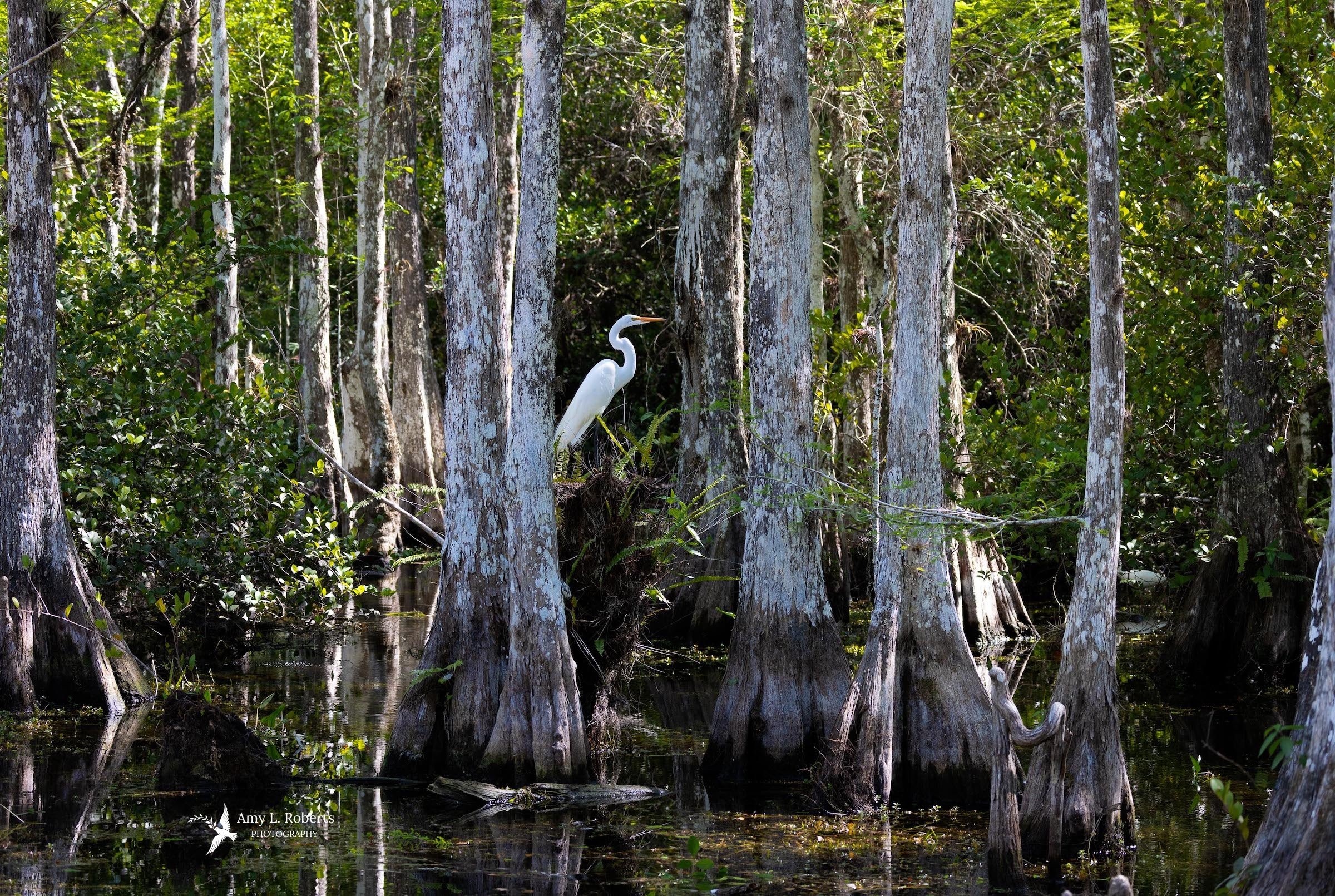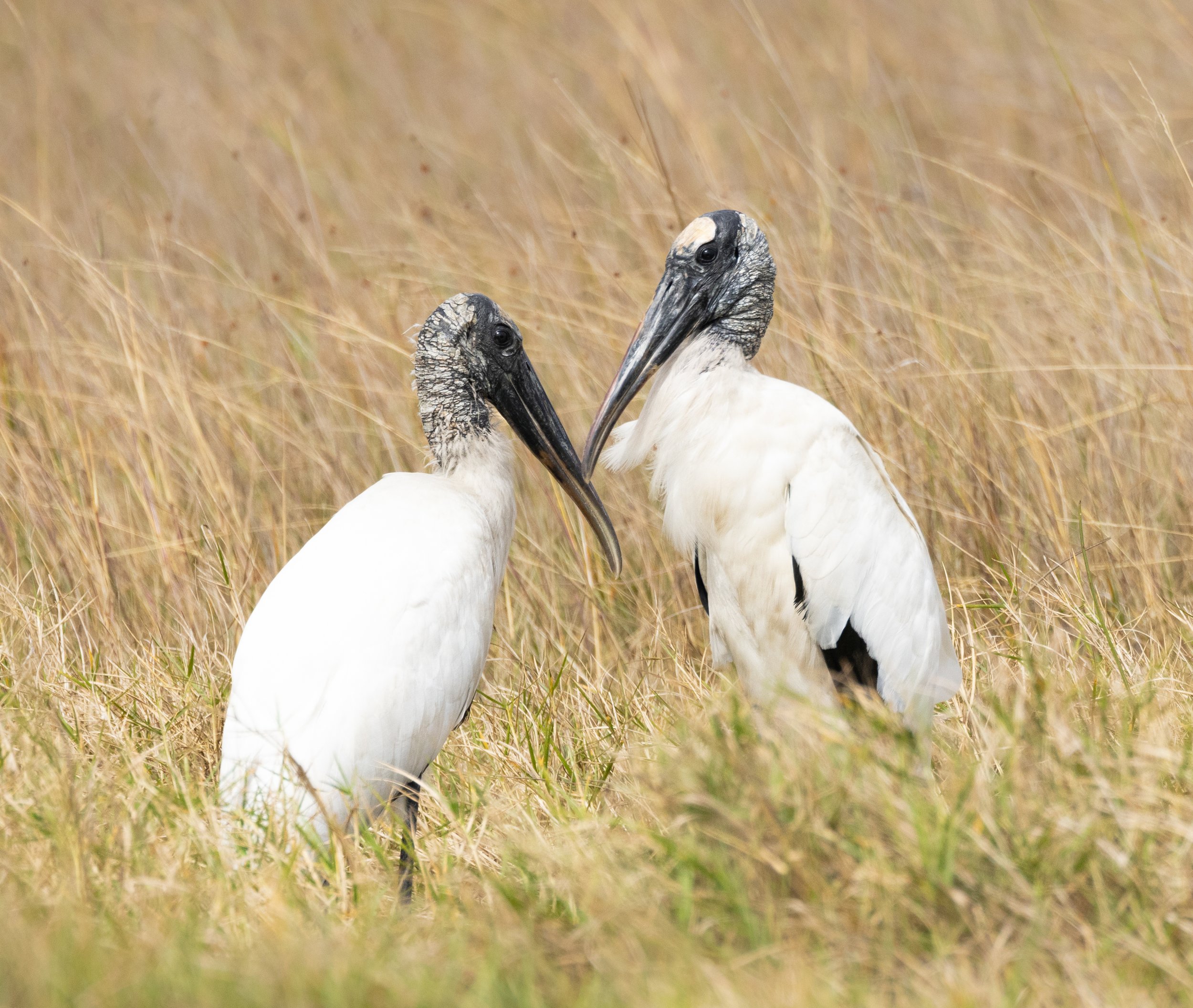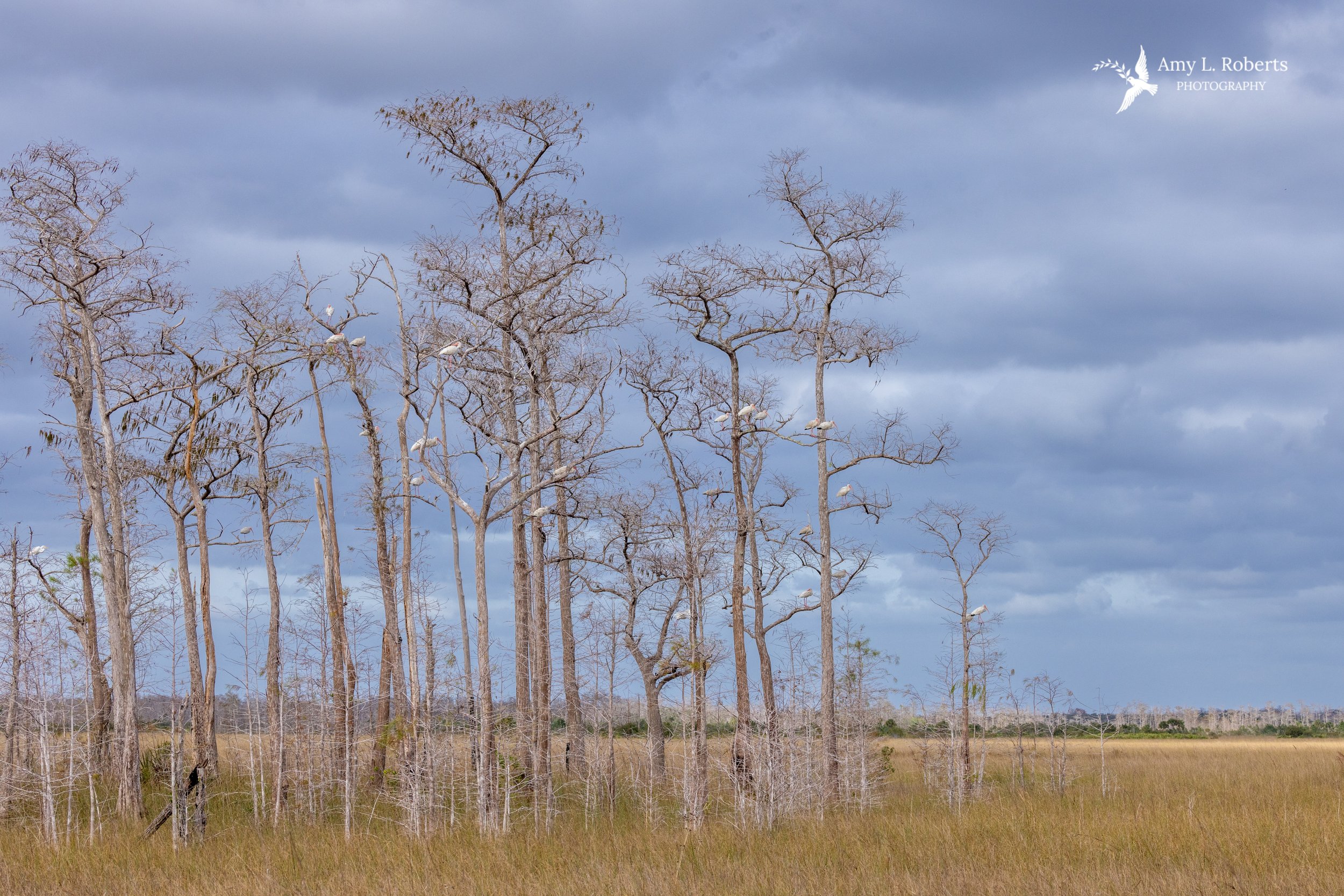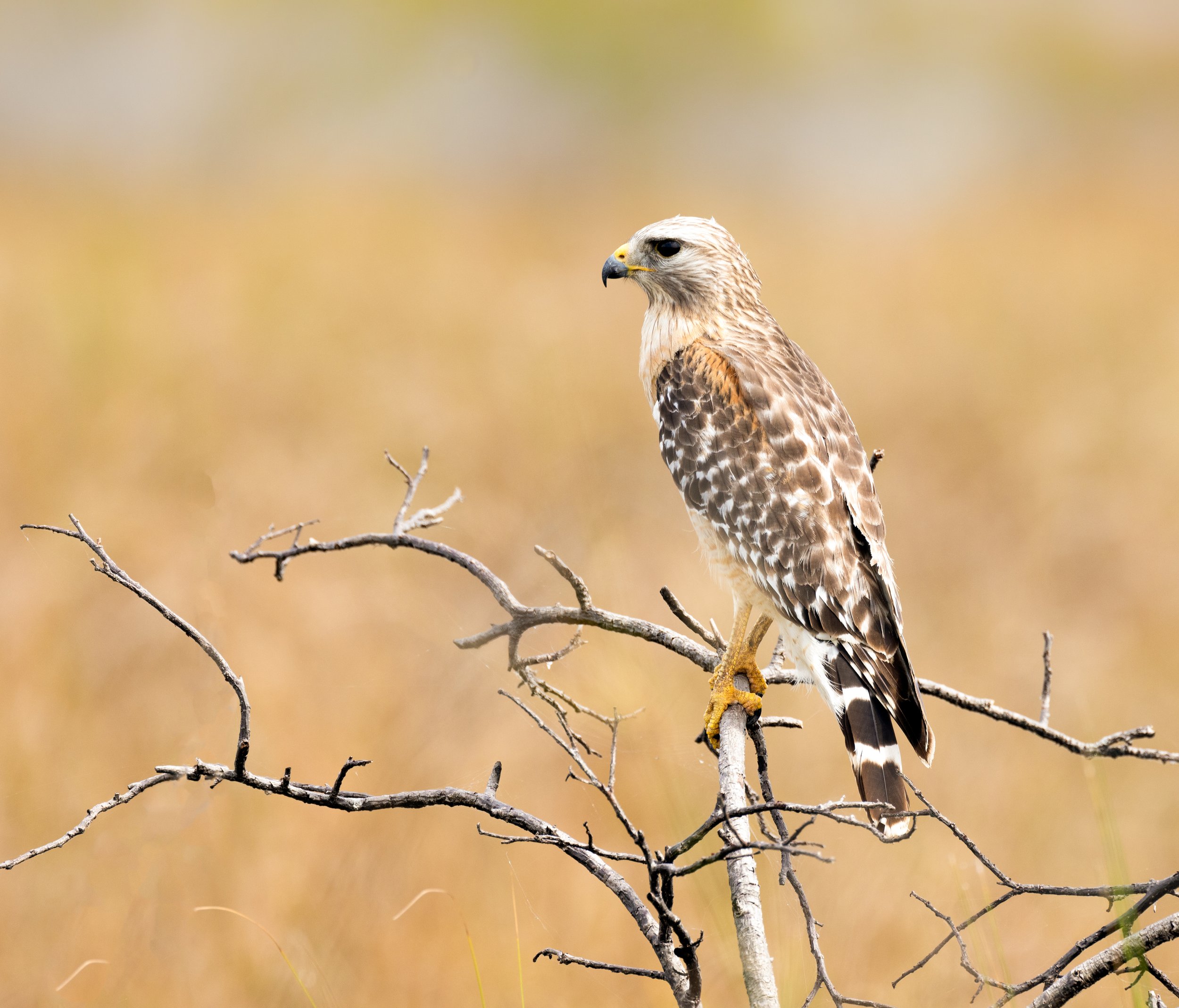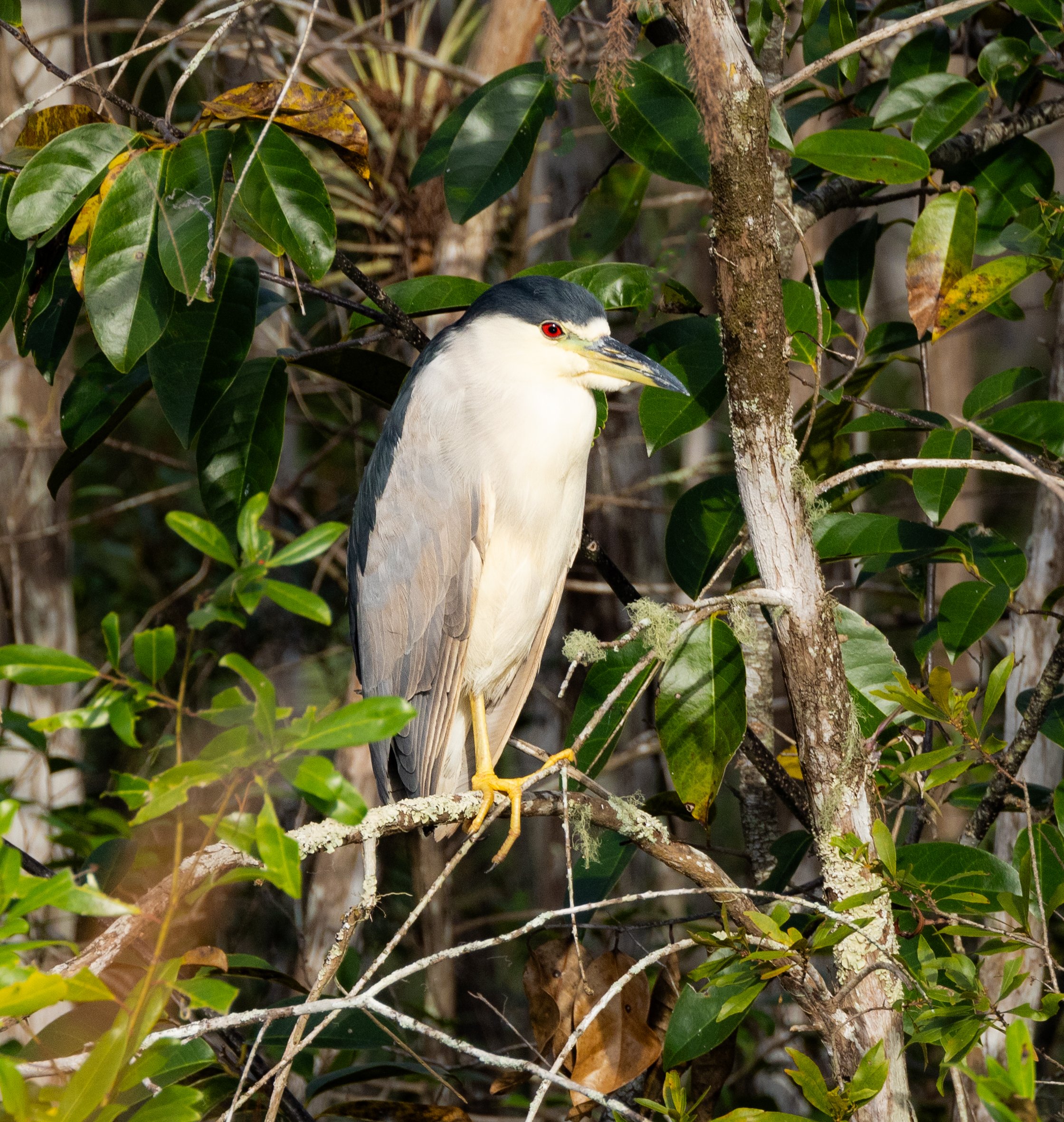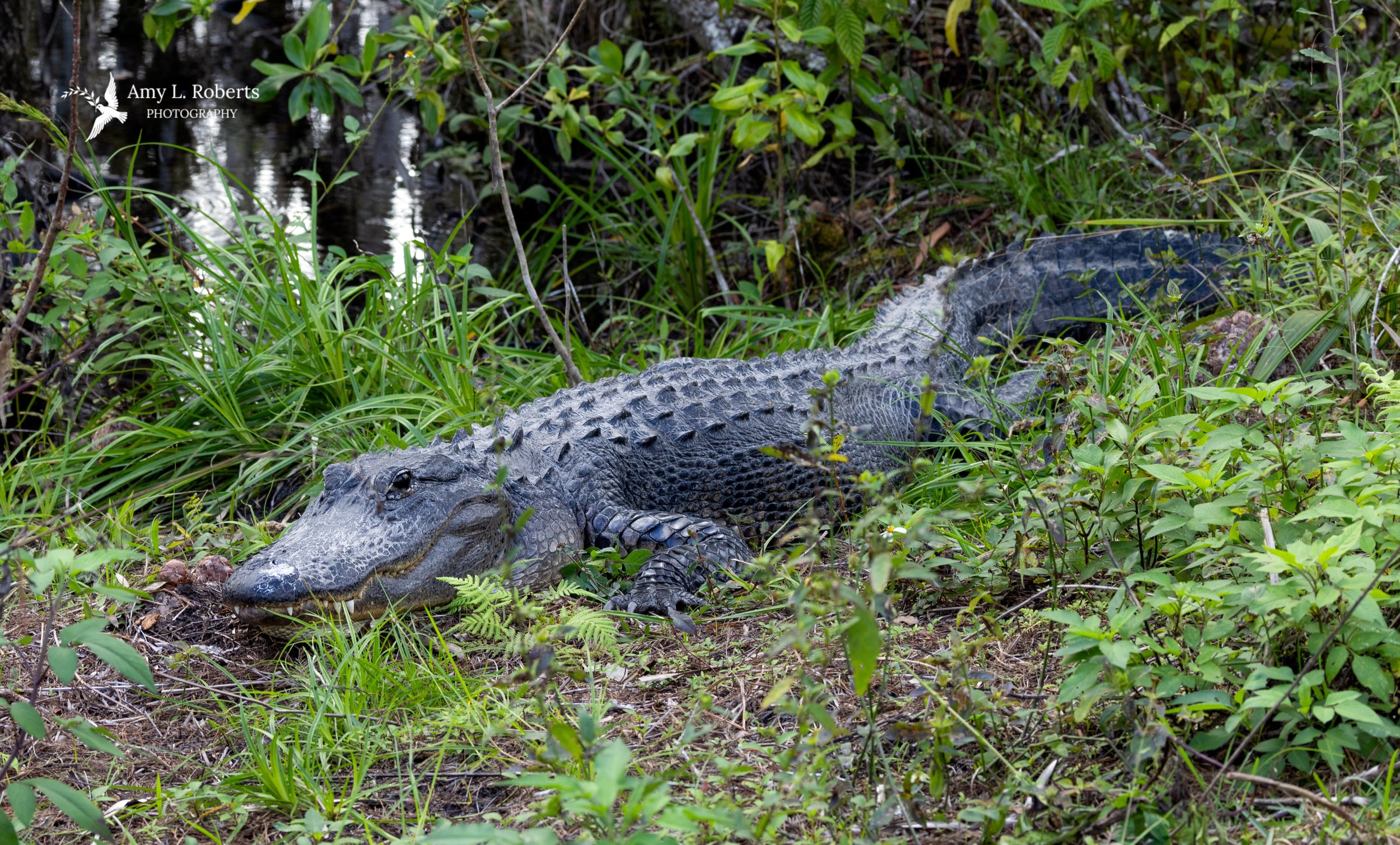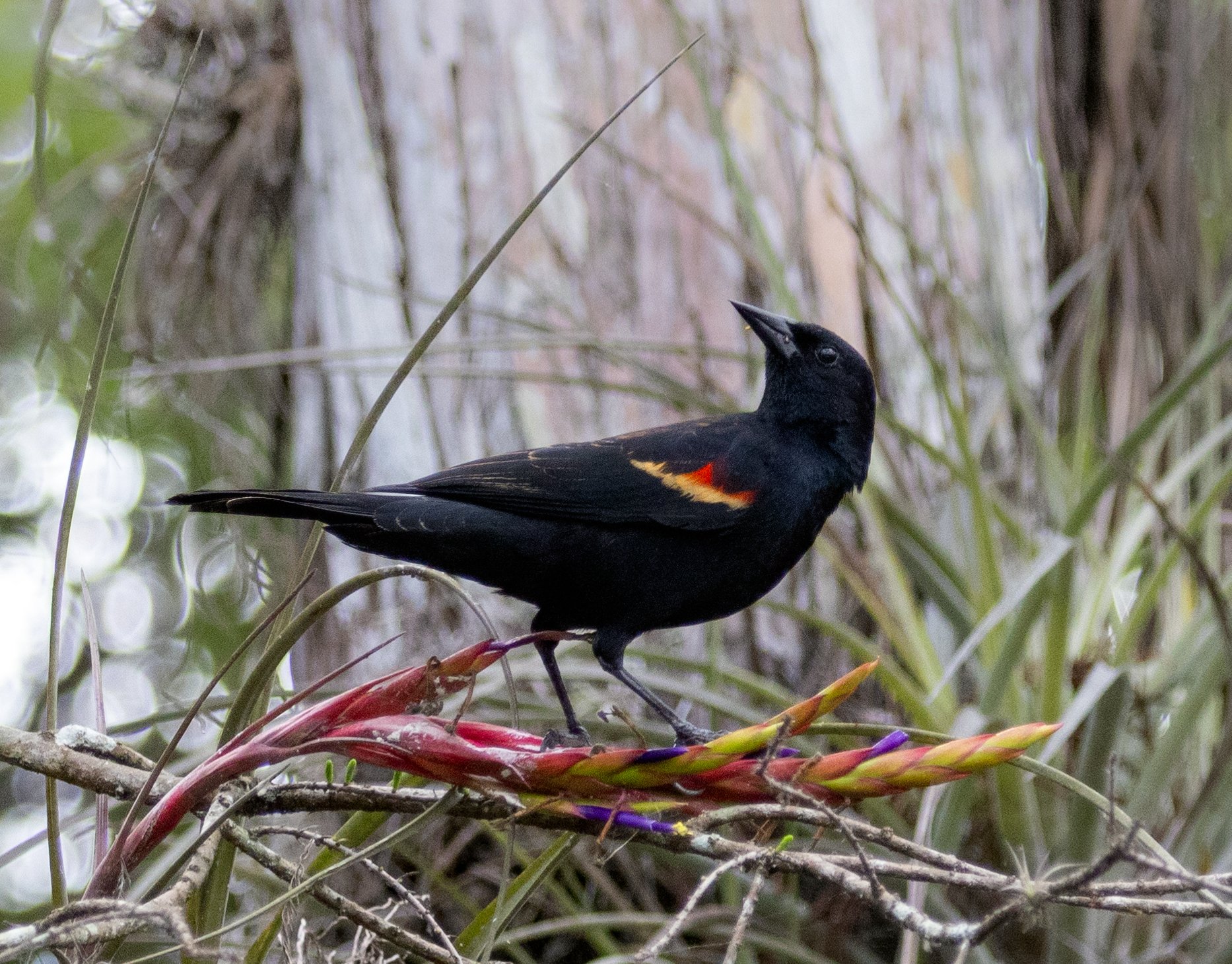Big Cypress National Preserve
Big Cypress National Preserve is a paradise for the bird photographer. Established as the first national preserve in the U.S., this vast area encompasses 729,000 acres of stunning, diverse landscape that attracts an incredible 190 species for birds. Not only is this preserve fascinating and awe inspiring to see, but it is also even more powerful to experience it when put into the context of what may have resulted. In the 1960s there was a movement to construct the world’s largest Jetport in the area that is now Big Cypress National Preserve. Once you have been to this magnificent area, it is heart stopping to imagine that this area could have been filled in and paved and, with it, a complete destruction of the phenomenal plant and wildlife that occupy these acres. Blessedly, a coalition of individuals and government officials prevented this catastrophic development and preserved Big Cypress.
Habitat: The Preserve is comprised of five distinct habitats, including cypress strands, estuaries, prairie, pinelands, and hardwood hammocks. By walking an established trail for a few miles, you can often see each of these fascinating habitats. All five of the habitats within the Preserve share the common element of water; while some of the habitats may be underwater the whole year, others may only be flooded for a few weeks or days per year. The length of time that each habitat spends under water each year is called a hydroperiod. It is the subtle elevation differences in the bedrock under Big Cypress that determines the hydroperiod of a habitat and the type of plant and animal life that you may encounter.
Bird Photography: Given the vastness of this area and the varied habitat, there are abundant opportunities to see birds and wildlife and take great photos. Each habitat has unique plants and animals and offers the photographer ample opportunity to play with the changing light of the different habitats. The 24-mile Loop Road is a worthwhile drive through the varied habitats of the Preserve including cypress strand, swamp, hardwood hammocks, pine lands, and prairie. The 20-mile drive along Wagonwheel Road and Turner River Road are also outstanding places to see birds and gators and observe the wildflowers and butterflies. If fortunate, you may see deer, raccoon, a snake or two, or the more allusive Florida black bear and critically endangered Florida Panther. Stop by the Oasis Visitor Center or Big Cypress Welcome Center and check out the National Park Service’s brochure on birding in Big Cypress for more detailed information of the vast species that you may see during your visit: Big Cypress Birds. As always a zoom lens is highly recommended and great photos can often be taken right from your car window.
Side Note: If possible, I highly recommend that you pick a trail or two to hike. Walking may allow you to gently move through the varied habitats and truly appreciate the geography of this stunning area. The Fire Prairie Trail and the Florida Trail, Orange-Blue-Red trails are recommended. However, regardless of what trail you choose, be sure to check trail conditions as some become inundated with water, which requires slogging through. As well, educate yourself to the landscape and any potential dangers - from poison ivy to snakes and how to safely pass by alligators.

